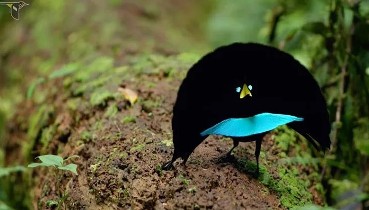
Amazing Nature
14 March 2022 ( 418 views )
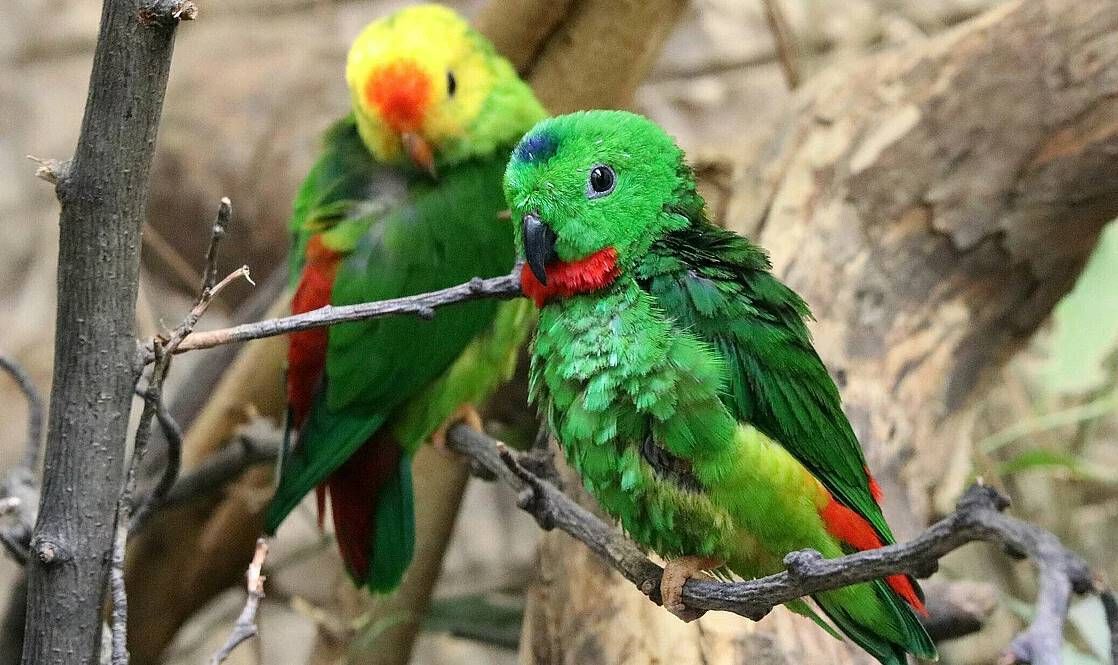
Advertisements
MAROON-RUMPED HANGING PARROT (Loriculus stigmatus)
Species Profile
Genus: Loriculus | Species: stigmatus
Size:
15cm (5.8 in)
Weight:
Probably 28-35g (1-1.2 oz)
Races including nominate:
one
Colour Adult:
Male-in general green in colour; red forehead and crown, reaching beyond level of eye; orange/yellow tint to nape and mantle; chin and throat have red mark; red carpal edge; dark maroon/red rump and upper tail coverts; green tail tipped with yellow/green. Bill black. Eye pale yellow. Female-green forehead and crown. Eye brown.
Colour Juvenile:
Green forehead and crown; yellow throat mark washed with red; green/yellow carpal edge. Bill horn in colour. Eye brown.
Call:
Calls are described as high-pitched and repetitious two or three-note sounds, the first note with upward inflection. Alarm call is shrill.
Housing:
Planted outdoor aviary (in warm climates) with shelter or indoor planted aviary 2.5 x 1 x 2m (8.2 x 3.3 x 6.5 ft).
Diet:
Fruits such as: apple, pear, banana, cactus fruits, guavas, pomegranate, the larger fruits halved, not chopped; vegetables such as grated carrot and broccoli; berries such as: blackberries, redcurrants, raspberries; small seeds such as: canary and soaked oats; spray millet; sponge cake and nectar; insectivorous mixture such as: mealworms, clean maggots and ant pupae, and eggfood when breeding.
Enrichment:
Vigorous chewer, so provide bird-safe, unsprayed flowering, fir, willow, pine or elder branches, heat-sterilized pine cones, wooden and vegetable tanned leather toys. Also provide overhead misters or shallow water bowls for bathing.
Nest Box Size:
Nest log 12" x 6" (30.5cm x 15.2cm).
Clutch Size:
3-4
Incubation Time:
21 days
Fledging Age:
33 days
Recommended Videos
 Black Sapphire Grapes1901 views
Black Sapphire Grapes1901 views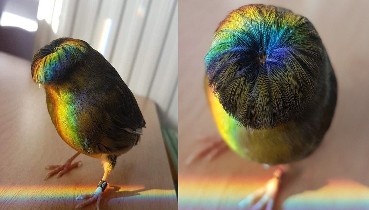 Meet Barry, A Gloster Canary That Has A Fabulous Bowl Cut Sweet41147 views
Meet Barry, A Gloster Canary That Has A Fabulous Bowl Cut Sweet41147 views-
Advertisements
 50 Beautiful Spine Tattoos That Make The Pain Worth It138 views
50 Beautiful Spine Tattoos That Make The Pain Worth It138 views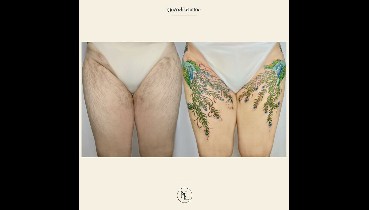 30 Times This Tattoo Artist Transformed Scars Into Beautiful Works Of Art112 views
30 Times This Tattoo Artist Transformed Scars Into Beautiful Works Of Art112 views Giant Groundsels on Mt. Kilimanjaro (Prehistoric Plant)2589 views
Giant Groundsels on Mt. Kilimanjaro (Prehistoric Plant)2589 views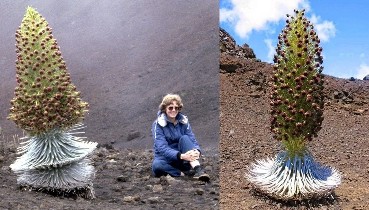 Silverswords (Argyroxiphium)346 views
Silverswords (Argyroxiphium)346 views Pictures Taken at The Perfect Time985 views
Pictures Taken at The Perfect Time985 views Meet the Brown-tail Moth (Euproctis chrysorrhoea)11211 views
Meet the Brown-tail Moth (Euproctis chrysorrhoea)11211 views
Advertisements



